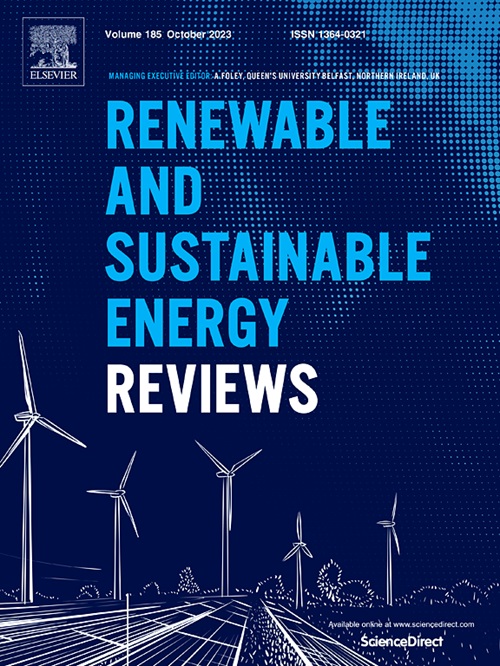用于电化学能量储存和转换的花状碳及其复合材料
IF 16.3
1区 工程技术
Q1 ENERGY & FUELS
引用次数: 0
摘要
制备花朵状碳材料的灵感来自花朵的形状,其基础是生物仿生学。它们已被广泛应用于能量存储和转换领域。与球形碳等其他形态的碳材料不同,类花碳材料的特点是表面充满了由叠层结构形成的大孔隙和通道。这些开放空间不仅提供了更大的比表面积,还为材料的掺杂和复合提供了支持和锚定。与空心结构相比,这些活性位点的暴露面积大大增加。叠层结构还有利于催化剂的分散和保护,为能量存储和转换领域活性材料的扩展和聚集提供了有效的解决方案。本文认真总结了类花碳及其复合材料的合成方法。水热合成法条件温和,但反应物选择有限,且对反应机理了解不足,从而限制了产品结构和性能。硬模板方法可以精确控制材料形态,但成本较高,环境效益较低。软模板和自组装方法简化了有序花状结构的合成,但需要严格的条件和控制。类花碳材料的应用要实现工业化还有很长的路要走。如何精确控制类花碳材料的形态,同时兼顾环境和经济效益,仍是一个挑战。要最大限度地发挥花形碳材料在复合材料合成中的优势,包括了解如何将其与其他物质有效结合,还需要进行更多的研究。本文章由计算机程序翻译,如有差异,请以英文原文为准。
Flower-like carbon and their composites for electrochemical energy storage and conversion
The inspiration for the preparation of flower-like carbon materials comes from the shape of flowers, based on biomimicry. They have been used extensively in the field of energy storage and conversion. Unlike other morphologies such as spherical carbon, flower-like carbon materials are characterized by surfaces filled with large pores and channels formed by stacked lamellar structures. These open spaces not only provide a larger specific surface area but also offer support and anchoring for the doping and compositing of materials. Compared to hollow structures, the exposure of these active sites is significantly increased. The stacked lamellar structure also facilitates the dispersion and protection of catalysts, providing an effective solution to the expansion and aggregation of active materials in the field of energy storage and conversion. This paper critically summarizes the synthesis methods of flower-like carbon and its composite materials. While hydrothermal synthesis offers mild conditions, limited reactant choices, and insufficient understanding of reaction mechanisms constrain product structure and performance. Hard template methods enable precise control over material morphology but incur higher costs and lower environmental benefits. Soft template and self-assembly methods simplify ordered flower-like structure synthesis, yet require strict conditions and control. Applications of flower-like carbon materials are still a long way to go for industrialization. Challenges remain in precisely controlling the morphology of flower-like carbon materials while balancing environmental and economic benefits. More research is needed to maximize the benefits of flower-shaped carbon materials in composite synthesis, including understanding how to combine them with other substances effectively.
求助全文
通过发布文献求助,成功后即可免费获取论文全文。
去求助
来源期刊

Renewable and Sustainable Energy Reviews
工程技术-能源与燃料
CiteScore
31.20
自引率
5.70%
发文量
1055
审稿时长
62 days
期刊介绍:
The mission of Renewable and Sustainable Energy Reviews is to disseminate the most compelling and pertinent critical insights in renewable and sustainable energy, fostering collaboration among the research community, private sector, and policy and decision makers. The journal aims to exchange challenges, solutions, innovative concepts, and technologies, contributing to sustainable development, the transition to a low-carbon future, and the attainment of emissions targets outlined by the United Nations Framework Convention on Climate Change.
Renewable and Sustainable Energy Reviews publishes a diverse range of content, including review papers, original research, case studies, and analyses of new technologies, all featuring a substantial review component such as critique, comparison, or analysis. Introducing a distinctive paper type, Expert Insights, the journal presents commissioned mini-reviews authored by field leaders, addressing topics of significant interest. Case studies undergo consideration only if they showcase the work's applicability to other regions or contribute valuable insights to the broader field of renewable and sustainable energy. Notably, a bibliographic or literature review lacking critical analysis is deemed unsuitable for publication.
 求助内容:
求助内容: 应助结果提醒方式:
应助结果提醒方式:


